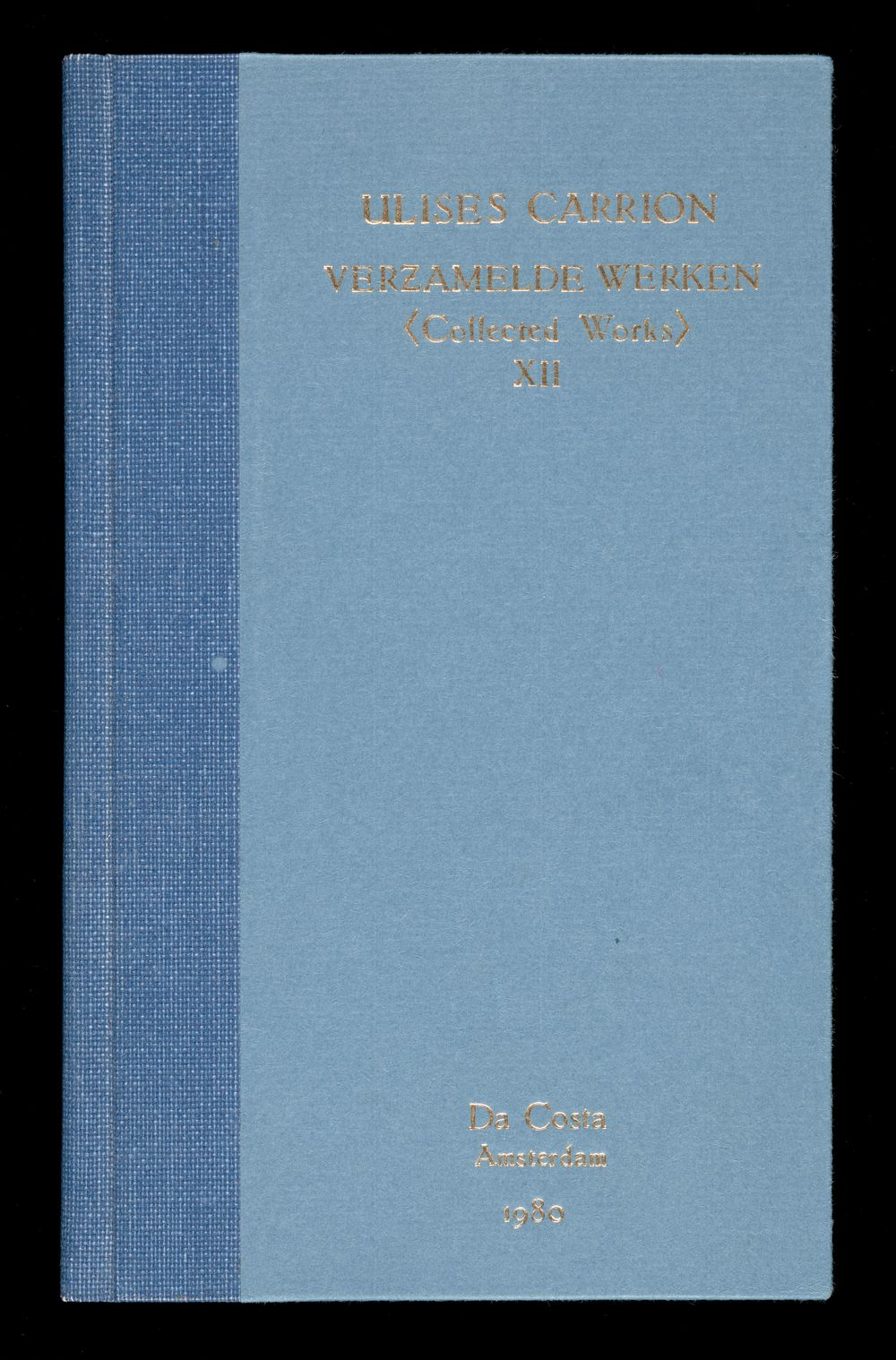‘A Book is a Sequence of Spaces’
Though Carrión explored numerous artistic questions and worked in a variety of media throughout his career, the bookwork long remained a key vehicle for his investigations. These works often isolated and transformed key elements of the book – paper, binding, layout, the look and sound of words – in order to articulate their functioning. Carrión also made numerous unique, unpublished bookwork manuscripts, many of which were later reinterpreted and republished by other artists and small presses after his death.

Verzamelde Werken / Collected Works XII, 1980
Ulises Carrión
Artists’ book: painting on canvas cut into sheets and bound into a book
By cutting a found painting into sheets and assembling it into a bound book, Carrión elegantly draws attention to the ways that a book functions as a medium. In transforming a two-dimensional painting into pages, Carrión compels the viewer to read the surface of the canvas sequentially. The book format also transforms the viewer’s experience with the canvas from visual support to tactile material. As a reader, the viewer can physically handle the painted surface, diminishing the separation between artist and audience and undermining the preciousness of the art object.
Accidence, 1975
Michael Gibbs (1949-2009)
Artists’ book
In 1975, Carrión launched Daylight Press, an editorial imprint with name and address that other artists were free to use for their own publications. Daylight Press was thus a way for artists to signal affiliation with one another rather than with a commercial publishing house. Accidence was the first of five books issued under the Daylight Press name; its author, Michael Gibbs, was a poet, visual artist, and editor who worked closely with Carrión.
Sistemas, 1983
Ulises Carrión
One of three artists’ books
Sistemas consists of an edition of 15 books, oblong in format and 400 pages in length, each of which Carrión has altered in a distinct way. Rather than using text, Carrión draws, colors, or paints various elements of the text block in order to draw attention to the book’s structure, emphasizing the interplay between the two-dimensional page surface and the three-dimensional volume.










